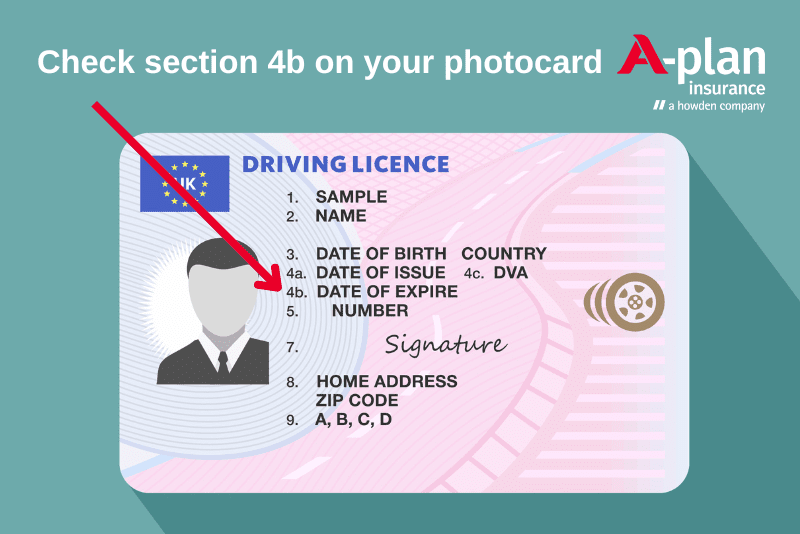A Guide to UK Driving Licence Codes and Categories

Have you ever looked at your driving licence in detail? If you do, you’ll see a whole host of letters, numbers and codes on the front and back. At first glance, these driving licence codes can feel confusing. But they give you crucial information about what vehicles you can drive, issue and expiry dates, as well as any restrictions like glasses or hearing aids.
If you’re wondering what all these codes mean, here’s your UK driving licence explained. We break down all the codes and categories to help you understand what vehicles you can and can’t drive.
What do codes mean on a driving licence?
It’s essential to know what kind of vehicles you’re allowed to drive and any restrictions you have to follow. If you don’t, you could fall foul of the law.
All motorists on UK roads must hold a valid licence appropriate for their vehicle type.
So, how do you know what you’re allowed to drive?
You’ll find this information in your driving licence codes and categories, detailed on the back of your licence.
The back of your driving licence explained
Flip your licence over, and you’ll see a table with rows of codes and pictures along the left-hand side. You’ll also see columns numbered 9 to 12.
Column 9 tells you what kinds of vehicles you can drive. You’ll see a mixture of pictures and categories (more on these categories to follow).Column 10 lists the start date of your licence for each type of vehicle.Column 11 lists the expiry date of your licence for each type of vehicle.Column 12 contains your driving licence codes. We’ll cover the difference between codes and categories below.
Driving licence codes
Driving licence codes are the numbers you’ll find in column 12 on the back of your licence. These will be numbers like “122” or “79(3)”, for example.
These codes tell you what conditions you need to meet to drive legally. For instance, “01” is a standard code requiring glasses or contact lenses to drive. “02” means you need a hearing or communication aid.
There are over 50 driving licence codes, and you must be up to speed (and know what they mean) if any feature on your licence. You can find the full list of driving licence codes on the gov.uk website.
Driving licence categories
Driving licence categories are the letters and numbers on the left of column 9 on the back of your licence. This includes things like “B”, “B1” and “BE” (for example).
These categories tell you the type of vehicle you’re allowed to drive.
The pictures to the right of these letters and numbers also represent each category type. For instance, “B” comes with a small picture of a car. “BE” comes with a picture of a car towing a caravan.
You’ll also find these categories on the front of your driving licence, labelled (9). On the front, these letters and numbers are separated by slashes or commas. They give a quick overview of what vehicles you can drive.
What is category A on a driving licence?
If you’ve looked at the pictures of bikes and mopeds, and wondered what is category A on my driving licence? You’re not alone.
Driving licences don’t just cover cars and vans. Chances are, you can drive some kinds of motorbikes and mopeds too.
For some categories (for instance, “A1” and “A2”), you’ll need additional driving tests and training before driving these bikes.
There are four Category A types on a driving licence:
A: If you hold a Category A licence, you can drive bikes with any sized engine.A1: Category A1 refers to “light motorbikes”, i.e. motorbikes with an engine up to 125cc and power output up to 11kW. This also allows holders to use motorised tricycles with power output up to 15kW.A2: Essentially a step up from A1 — letting you drive motorbikes with power up to 35kW.AM: The AM category lets you drive a two or three-wheeled vehicle with a maximum speed of 28 miles per hour. This also lets drivers use “light quad bikes” (i.e., with an unladen mass of up to 350kg) and a max speed of 28 miles per hour.
As well as Category A on your driving licence, a couple more apply to two and three-wheeled vehicles. These are “p” and “q”.
P: This is another type of moped category (appearing in italics and lowercase) that shows you can drive two-wheeled vehicles with a max speed over 28 miles per hour, but less than 31 miles per hour. For this category, the engine can’t be more powerful than 50cc.
Q: A category that means you can drive two and three-wheeled vehicles without pedals, but only if the engine isn’t more than 50cc and the max speed isn’t more than 15.5 miles per hour. This category also covers e-scooters.
What is B1 and B on a driving licence?
B categories on a driving licence refer to cars and light vehicles. They also refer to towing trailers and caravans.
Category B on your licence means something slightly different depending on when you passed your test.
If you passed before 1 January 1997: You can drive a vehicle and trailer combination with a maximum authorised mass (MAM) of 8,250kg. This also lets you drive a minibus towing a trailer over 750kg.
If you passed on or after 1 January 1997: You can drive a vehicle with up to 8 passenger seats up to 3,500kg MAM, and a trailer weighing up to 750kg. This also lets you tow heavier trailers, if the total MAM of your trailer and vehicle isn’t more than 3,500kg.
The other two B categories are “BE” and “B1”:
BE: If you see this on your licence, you can drive a car towing a trailer.
If the “valid from” date (i.e., column 10) is before 19 January 2013, you can tow a trailer of any size — within your vehicle’s towing limits. If the “valid from” date is after 19 January 2013, you can tow trailers with a MAM up to 3,500kg. This must still be within the towing limits of your vehicle.
B1: The B1 category means you can drive a four-wheeled vehicle up to 400kg unladen. If the van is designed to carry goods, it can weigh up to 500kg. This code features on most standard UK driving licences.
What is C1 and D1 on a driving licence?
The last main categories on your driving licence are “C” and “D”.
C categories refer to vans and commercial vehicles. They let you know what size and types of vans you can drive.D categories refer to minibuses and coaches. Again, they let you know the size and types of coaches and minibuses you can legally drive.
If you’ve got a standard driving licence, you’ll have to take extra tests and training to gain a “Driver Certificate of Professional Competence” (CPC) for category C and D entitlements.
The different types of category C and D are:
C: This refers to large goods vehicles and means you can drive anything over 3,500kg. You can also tow a trailer as long as it doesn’t weigh more than 750kg.CE: The same as “Category C”, but this also allows you to tow trailers over 750kg.C1: Similar to “Category C”, but a bit more restrictive. This category lets you drive vehicles between 3,500kg and 7,500kg MAM. You can also tow trailers weighing less than 750kg.C1E: Lets you drive C1 vehicles with a trailer over 750kg. With this category, the combined weight of both vehicles can’t be more than 12,000kg.D: This means you can drive buses with up to 8 passenger seats. You can also tow a trailer up to 750kg.DE: You can drive any category D vehicle with a trailer over 750kg.D1: Refers to minibuses with up to 16 passenger seats and a max length of 8 metres. Like most C and D categories, you can also tow up to 750kg trailers.D1E: You can drive a category D1 vehicle with a trailer over 750kg.
What do the other driving licence categories mean?
We’ve covered the main driving licence categories found on UK driving licences. There are a few other categories you might see though, often for specialist vehicles like tractors and road rollers.
These are:
F: Agricultural tractors.G: Road rollers (often used in construction).H: Tracked vehicles (also often used on building and demolition sites).K: Mowing machines or pedestrian-controlled vehicles.L: Electrically propelled vehicles.M: Trolley vehicles (for instance, trolley buses).N: Vehicles exempt from tax duty (i.e., electric, agricultural and historic vehicles).
As well as looking at the back of your driving licence, you can check online to see what vehicles you can drive. This is a government service that lets you view your driving record (including any penalty points or disqualifications) as well as create a licence “check code” to share your record with someone else (for instance, a car hire company).You can also find more detailed information on driving licence categories from the gov.uk website.
Also read:
Do speeding tickets affect insurance? What to know.
What is a Speed Awareness Course? Cost, Eligibility & More
UK provisional driving licence – A complete guide




